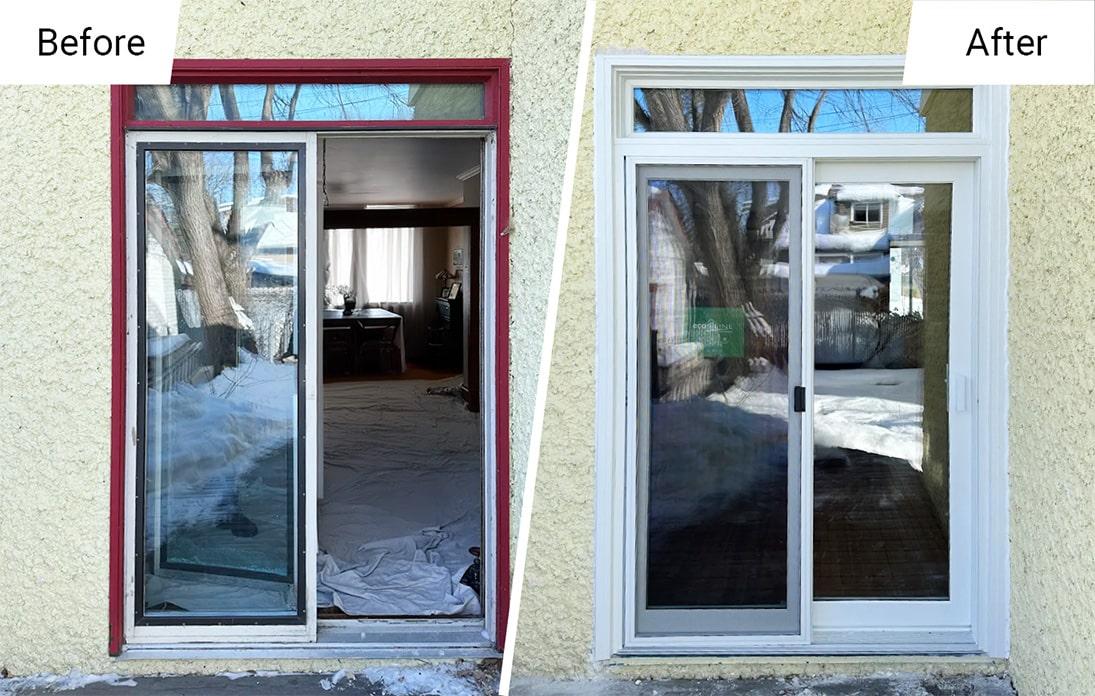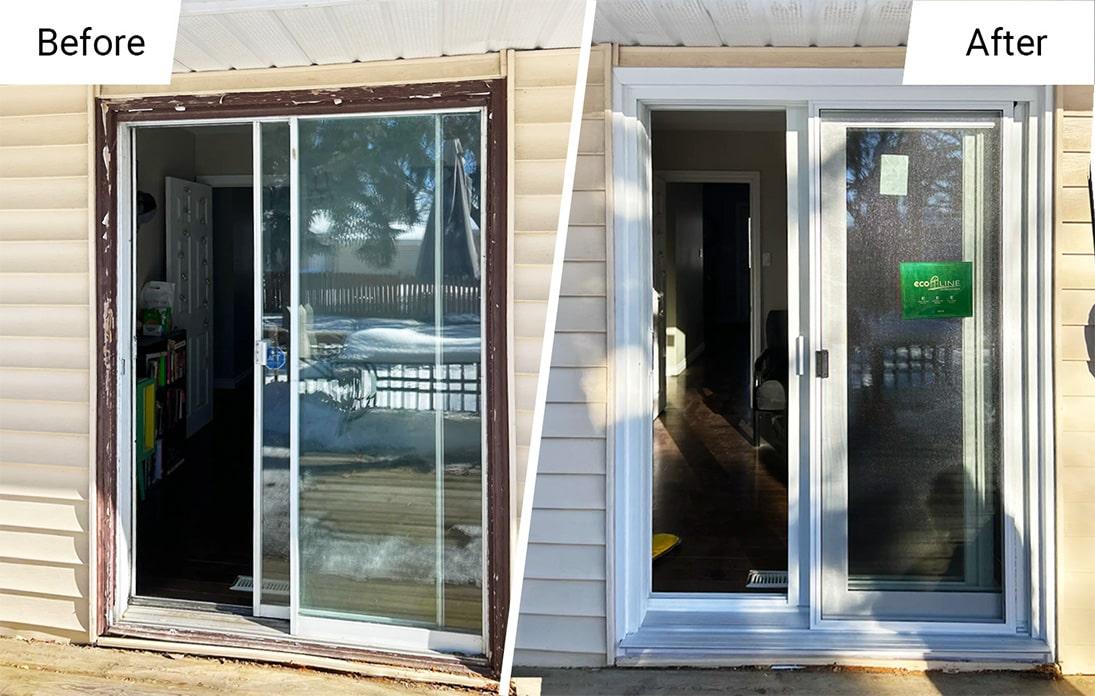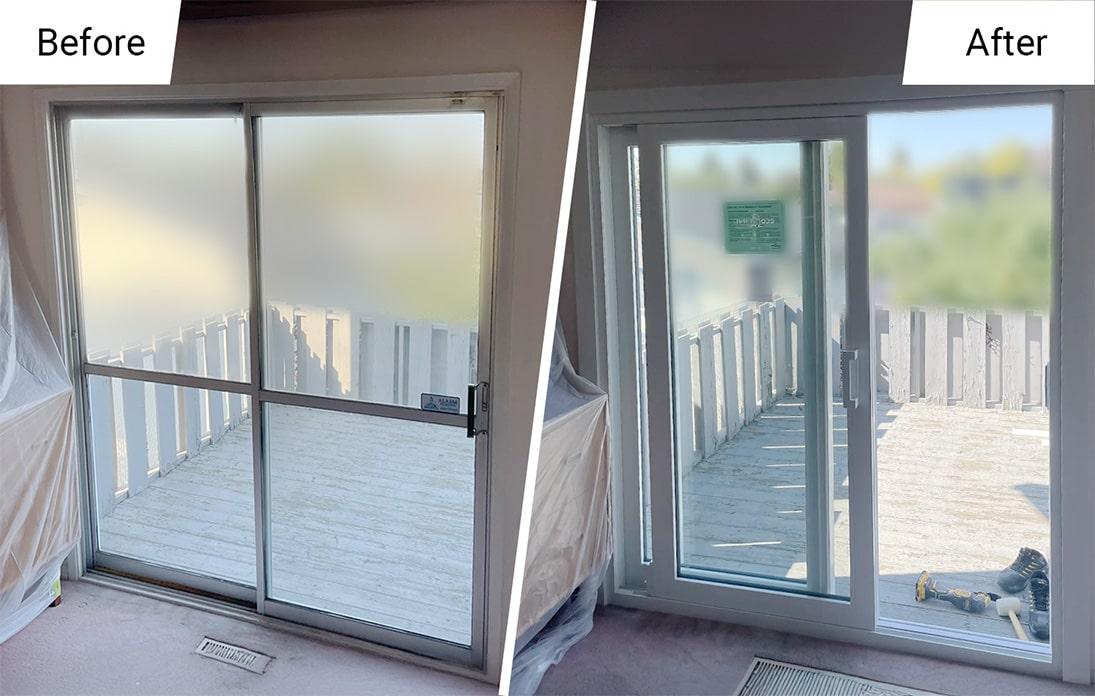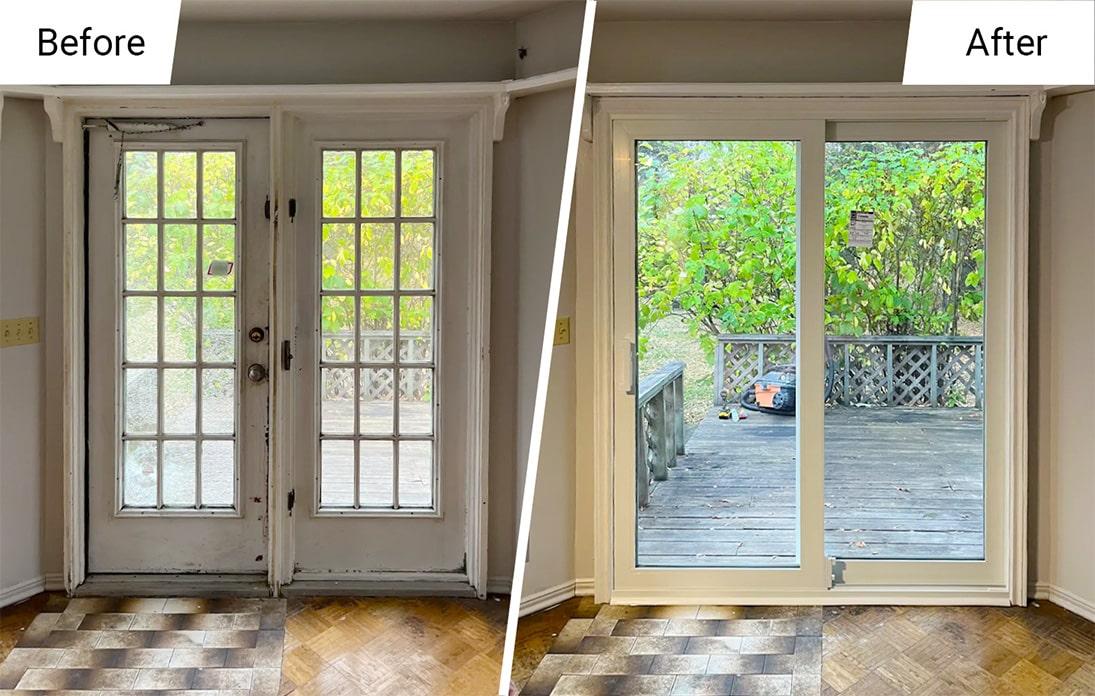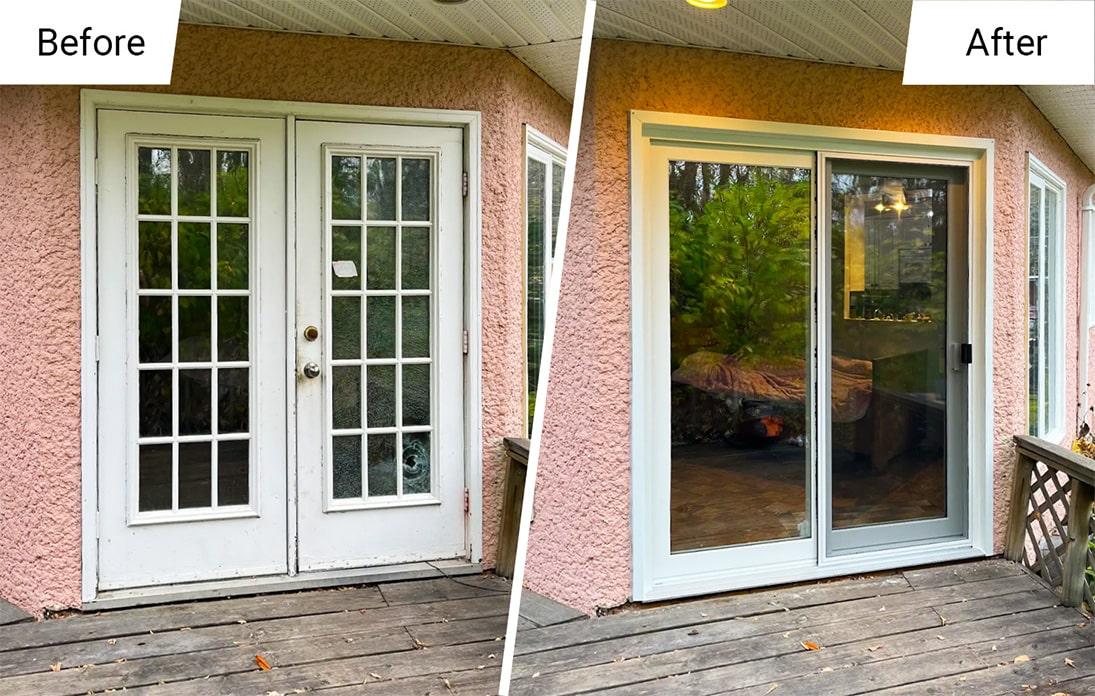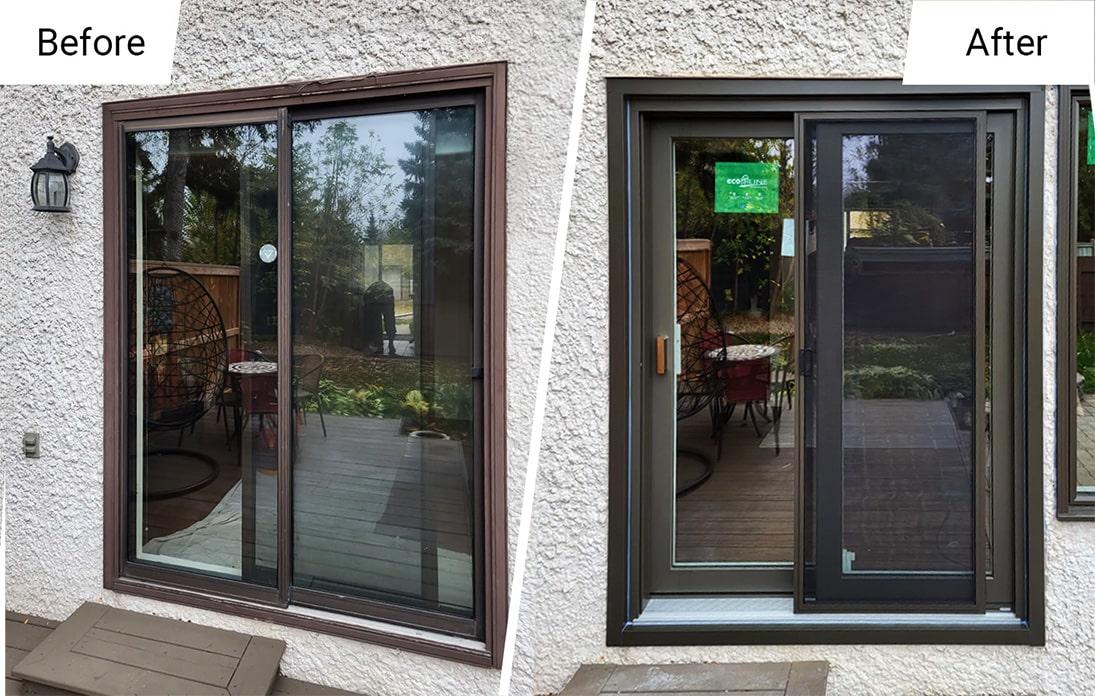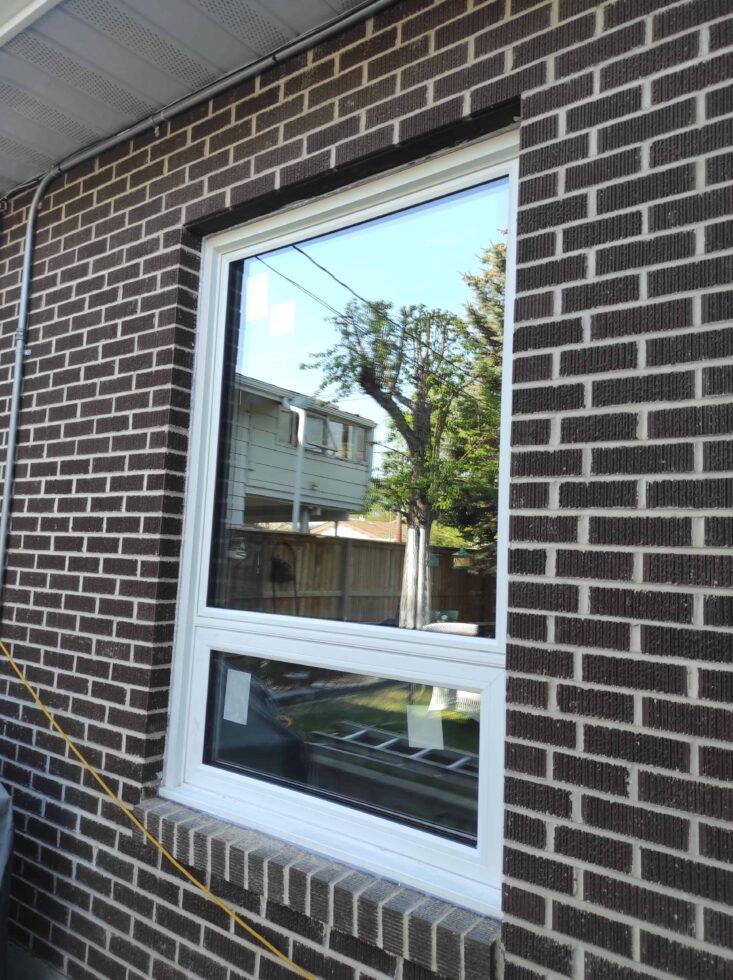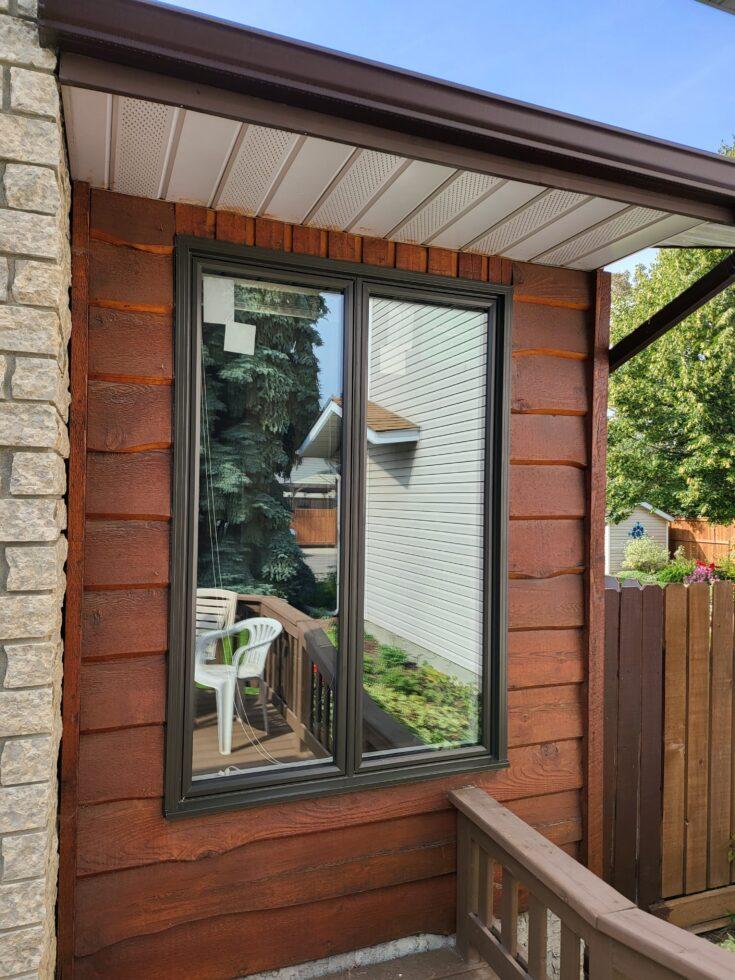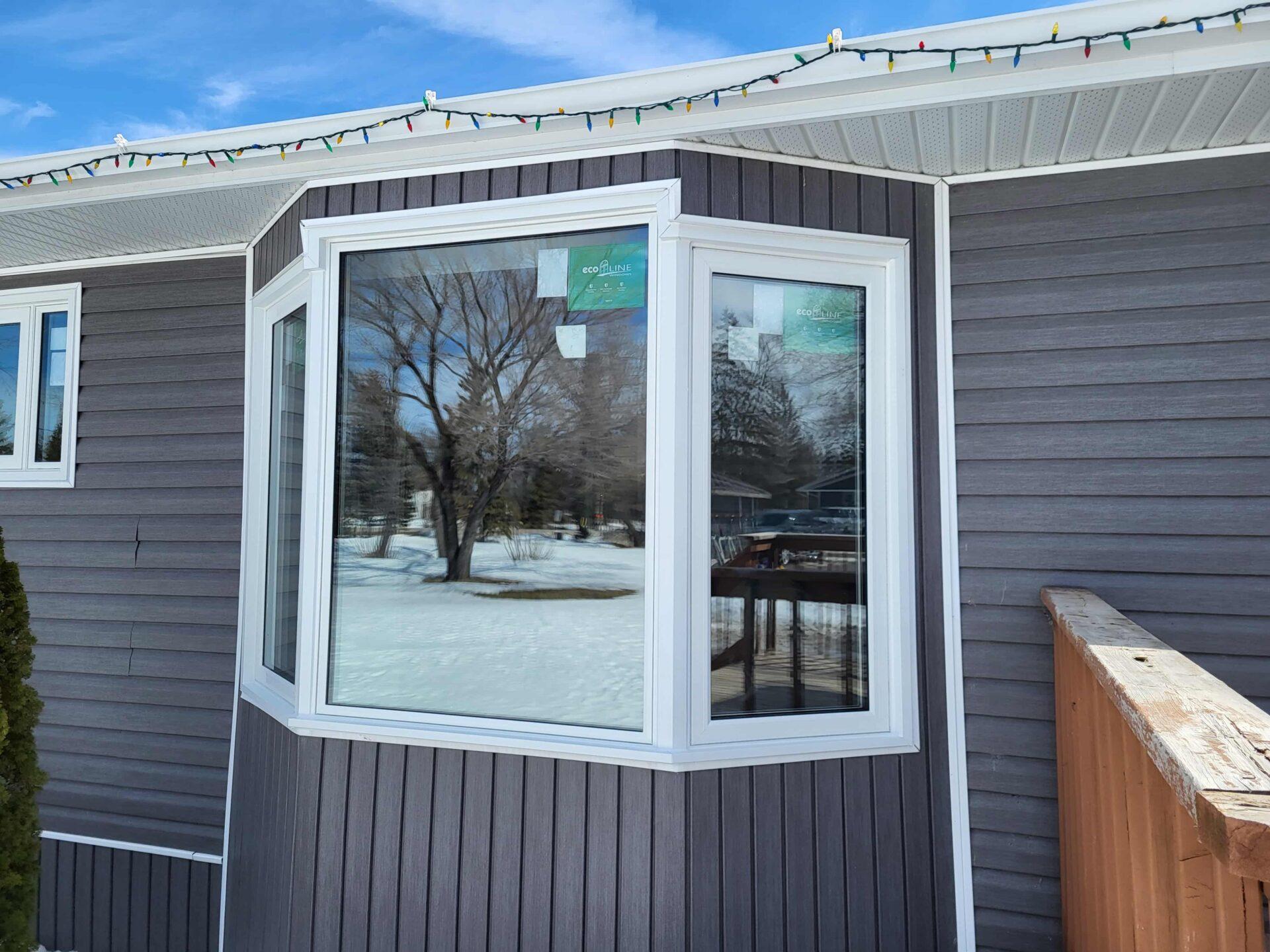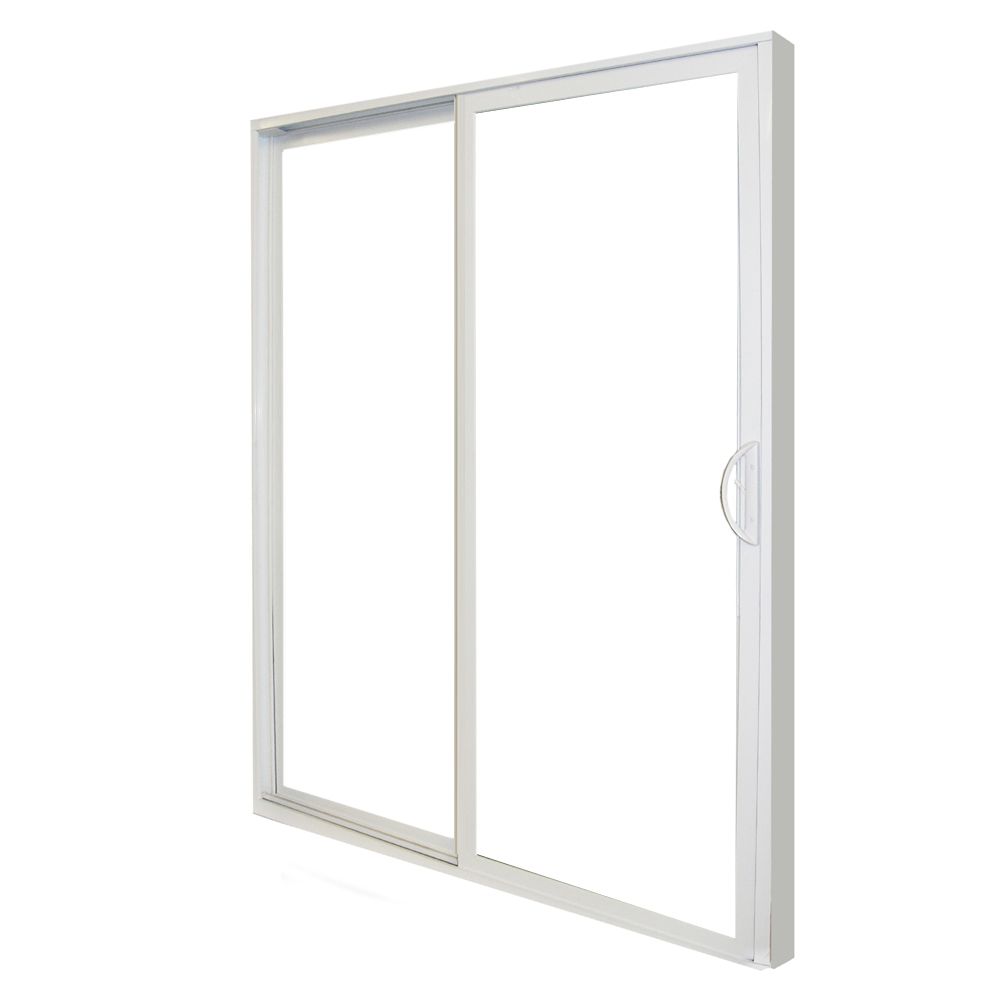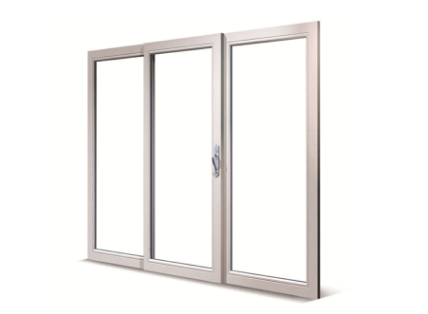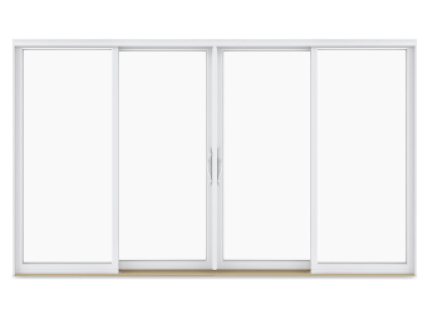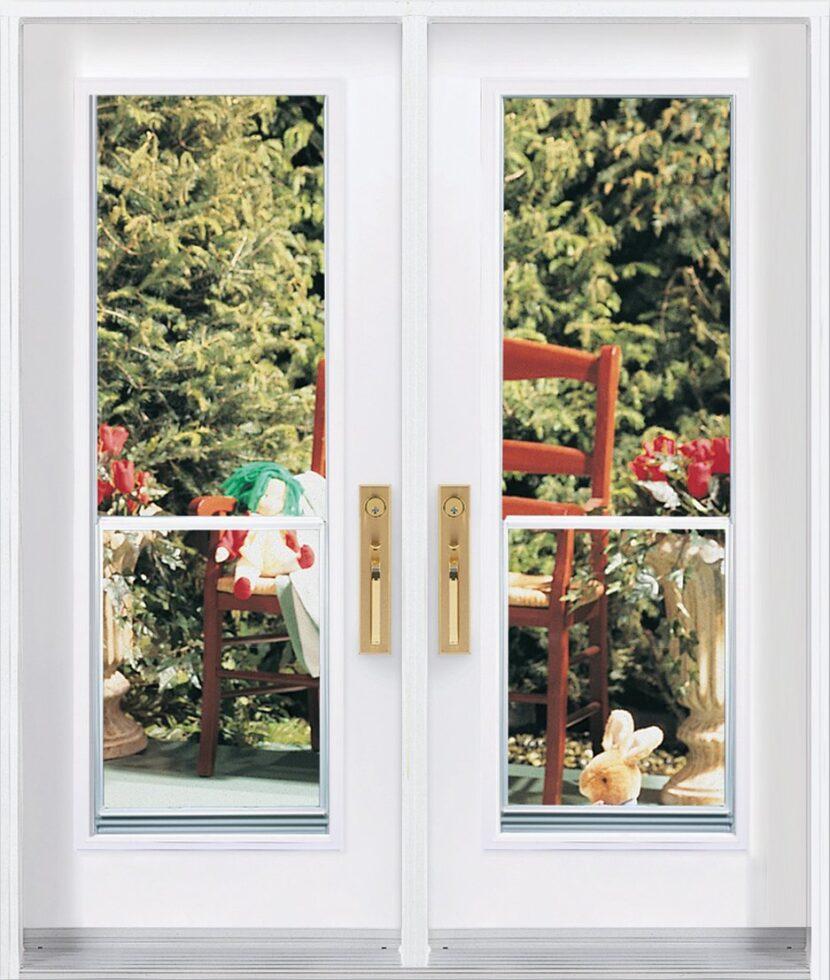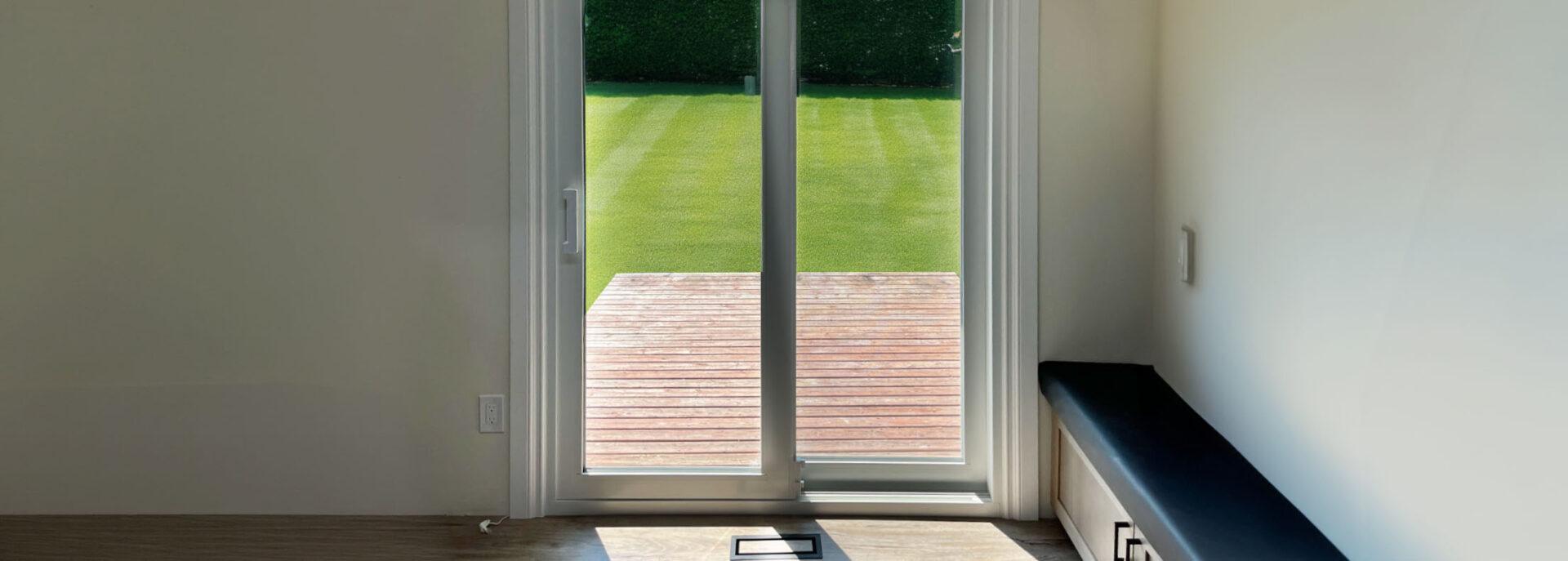

Can You Turn a Window into a Patio door? All You Need to Know [2024]
Aug 5, 2019
Nov 29, 2024
10 min read
1769
Today, there are very few restrictions when it comes to getting exactly the kind of custom windows you want.
Homeowners no longer settle for changing their old windows with the same kind, but let their imaginations fly to get the most comfort and convenience out of their replacement.
That’s why projects like turning a window into a patio doors or changing a regular window into a bay, are becoming more and more popular.
Patio Doors Case Studies
Today, we will discuss whether it is possible to convert your window opening to a patio door, the pros and cons of this renovation project, and its feasibility. Interested? Keep reading!
What You Should Know Before Converting a Window Into a Patio Door
It’s true that these projects have their own particulars, but when done properly they aren’t any less successful than a regular window replacement.
Here are some things you should know if you are considering putting a patio door in place of an existing window.
- Attention! Expanding the opening to accommodate a patio door, almost always requires a permit.
The exception in most cases is if the wall is only cut downward. Because cutting a bigger opening requires removal of king studs in the wall, reinforcing or replacing the weight carrying header above the window, and potentially compromising electrical work around the window, this work must be done in accordance with city permits.
Because a lot of these factors contribute to the structural stability of your home it is important to ensure that the potential project doesn’t create problems. Let’s look at the following diagram that demonstrates the anatomy of a window opening.
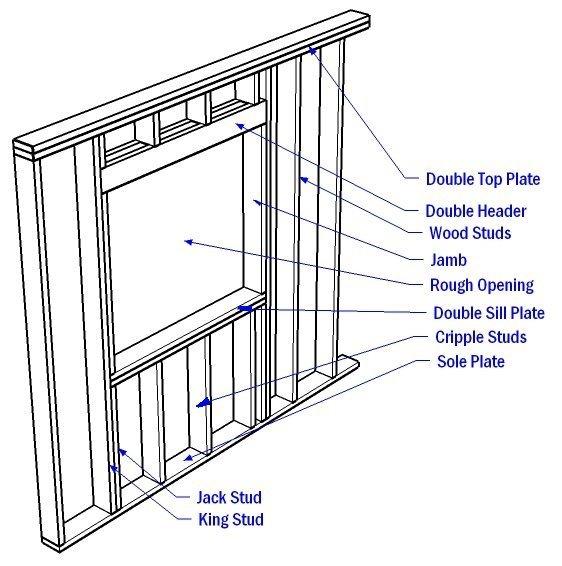
- Remember, you (not the window company) are responsible for any permits that are required for work on your house.
We strongly suggest you consult the city before getting a quote, or get some measurements and ideas from a project consultant and then see if it’s possible to obtain a permit with the information you’re given.
Unless the expansion you’re planning is extreme, most of the time these permits are fairly easy to obtain. Either way, be cautious and make sure you obtain or inquire about permits before any work commences on your windows.
Challenges of Replacing a Window with Sliding Patio Doors
Wall cut-outs for patio doors present specific challenges. Suppose, you’ve obtained the permit and the city has given a green light to your replacement project. What’s next?
Depending on where the new patio doors are to be located you may also be responsible for having to find contractors to do the cutting. Most window installers are trained and comfortable with doing cut-downs and cut-outs through dry-wall, stucco, and siding.
Very few window companies cut concrete, so if you’re looking for a walkout in the basement you may have to turn to a specific company who can handle it. Most times concrete cutting is done the day before a window or door installation to keep parts of your home exposed for as little time as possible.
Cut-outs also present a challenge in preserving the drywall inside the house. Most of the time when a window is turned into a patio door the header has to be expanded beyond the projected opening of the door.
Therefore you may be left with missing siding or drywall at the end of your installation, requiring refinishing and painting around your new patio door inside and outside. Although most installers try to avoid this, it is simply impossible sometimes when a header replacement is required.

Once the opening is enlarged it is also important that the area around the new door is reframed properly so that it can not only hold the weight of the door but also ensure no moisture or air is let into the structure of the walls.
How well this is done depends entirely on the expertise of your installers. This is why we often say that proper installation is just as important as product quality.
Window replacements are not always the cleanest jobs when it comes to dust and debris. But this is especially true with cut-out projects. You can imagine what happens to a material like a stucco or drywall.
Although good installers try to ensure the cleanest working site possible, be prepared for above average amounts of dust when cutting is done.
Window vs. Patio Door: Pros and Cons
As you see, there are some challenges to making such a window-into-door replacement project successful. When deciding between keeping a window or converting it into a patio door, weighing the advantages and disadvantages of each option is important. Here are some key points to consider:
Pros of Replacement Windows:
- Cost-Effective: Typically less expensive to install and maintain.
- Energy Efficiency: Often better insulation, leading to lower energy costs.
- Aesthetic Flexibility: Various styles and designs to fit any home decor.
- Ease of Installation: Generally simpler and quicker to install than patio doors.
Cons of Replacement Windows:
- Limited Access: Provides no direct outdoor access, limiting ease of movement.
- Ventilation: Smaller windows offer less ventilation compared to patio doors.
- View and Light: A smaller glass area means less natural light and a limited view.
Pros of Patio Doors:
- Enhanced Access: Provides direct access to outdoor spaces, ideal for entertaining and convenience.
- Increased Natural Light: Large glass panels allow more light into the home.
- Open Feel: Creates a seamless indoor-outdoor transition, making spaces feel larger.
- Aesthetic Appeal: Adds a modern, elegant look to your home.
Cons of Patio Doors:
- Higher Cost: More expensive to install and maintain.
- Energy Loss: Larger glass surfaces can lead to higher energy loss if not properly insulated.
- Space Requirements: More wall space and potential structural changes are required.
- Security Concerns: May present additional security risks if not properly secured.
Balancing these pros and cons can help you make an informed decision that suits your home’s needs and lifestyle.
What to Consider When Replacing a Patio Door?
Replacing a patio door is a significant home improvement project that requires careful planning and consideration. Here are some key factors to keep in mind:
- Types of Patio Doors: Choose the style that best suits your needs and space. Options include 2, 3, or 4-panel sliding, bi-bolding, or french garden doors. Each style comes with its own unique set of benefits, but most homeowners opt for standard 2-panel sliding patio doors when installing them instead of old windows to make fewer changes to the home structure.
- Size: Consider the dimensions of the door opening. Larger doors provide more light and access but may require structural modifications.
- Cost: When replacing window with patio door be prepared for higher expenses compared to standard window replacements. Converting a window to a patio door typically involves more extensive work, which can increase the overall cost.
- Best time to replace patio door: Plan the project during favourable weather conditions to avoid delays and complications. Spring and early summer are ideal times to undertake such renovations.
- Glass Type: Opt for triple-pane glass to enhance energy efficiency and insulation. This glass minimises heat loss in the winter and keeps your home cooler in the summer, making it a worthwhile investment.
By considering these factors, you can ensure a smooth and successful patio door replacement that enhances the functionality and beauty of your home.
Electrical Wiring Around Future Patio Door
Depending on where the existing window is located, the wall around it may or may not carry electrical wiring. If the cut-out has to interrupt the current wiring arrangement you may have to look into hiring an electrician as well to ensure everything is put back properly.

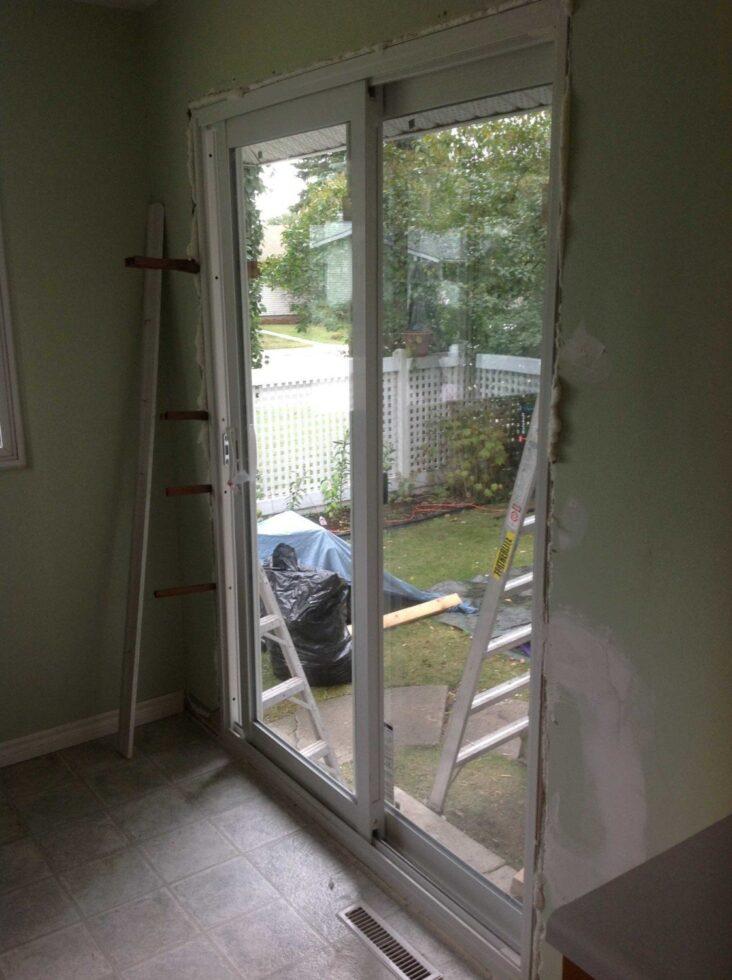
Turning a window into a patio door may seem like an overwhelming project for a homeowner. Not only do you have to manage securing permits and the window company, but you may also have to hire additional trades like drywall installers, painters, or electricians if you want the work to look seamless.
But homeowners who go through with these projects say that the benefits of new patio doors far outweigh the challenges associated with this kind of project.
What’s more important if you’re considering this kind of a project, is that everything must be done right the first time. While you may get a leak or some drafts with a badly installed window, a poorly installed patio door can result in a wall collapse. Do make sure you get the necessary permits and secure quality window installers.
A Pro TIP: Not cutting corners when cutting walls can save you a lot of headaches in the long run!
FAQ
Is converting a window to a patio door cheaper than replacement?
No, converting a window to a patio door is generally more expensive than a simple window replacement. This is because the process involves structural modifications to accommodate the larger opening, which may require permits, additional materials, and specialised labour.
Is a bigger patio door more expensive?
Yes, a bigger patio door is typically more expensive. Larger doors not only cost more in terms of materials but also require more extensive labour and possibly additional structural modifications to ensure proper support and stability.
Learn everything you need to know about buying replacement windows:
Find out how much new windows should cost
See our full line of replacement vinyl windows
Follow the replacement process in our visual INFOGRAPHIC






